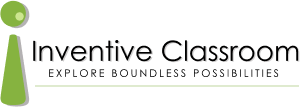Best Coding Language for Robotics in STEM Education

Welcome to the Inventive Classroom, where we delve into the world of robotics and STEM(Science, Technology, Engineering, and Mathematics) education. In today's digital age, equipping students with coding skills is essential for preparing them for the future. As robotics gains prominence in educational settings, choosing the right coding language becomes crucial. In this article, we explore the best coding language for robotics in STEM education.
Why Robotics in STEM Education?
Robotics offers a hands-on approach to learning that combines science, technology, engineering, and mathematics (STEM) principles. It fosters critical thinking, problem-solving, creativity, and collaboration skills in students. By engaging with robotics projects, students gain practical experience in applying theoretical concepts, making learning more tangible and engaging.
The Importance of Coding in Robotics Education
At the heart of robotics lies coding – the language that enables students to bring their creations to life. Through coding, students learn computational thinking, algorithmic logic, and programming fundamentals. By writing code to control robots' movements, sensors, and actions, students gain valuable insights into the underlying principles of robotics and develop proficiency in programming – a skill that is in high demand across various industries.
Choosing the Right Coding Language:
When it comes to coding languages for robotics, several options are available. Each language has its strengths and weaknesses, making it important to consider factors such as ease of learning, versatility, community support, and compatibility with hardware platforms. However, some languages stand out for their suitability in educational settings due to their ease of learning, versatility, and robust community support. Here are three top contenders:
1. Scratch:
Ideal for beginners, Scratch is a visual programming language developed by MIT Media Lab. Featuring a user-friendly interface and block-based coding, Scratch enables students to create interactive stories, games, and animations. With its drag-and-drop functionality, students can quickly grasp programming concepts without the complexities of syntax. Scratch is widely used in elementary and middle school settings to introduce students to the fundamentals of coding and robotics in a fun and engaging manner.
2. Python:
As one of the most popular programming languages worldwide, Python offers versatility and readability, making it an excellent choice for robotics education. Python's straightforward syntax and extensive libraries make it accessible to learners of all levels. With Python, students can develop complex robotics applications, interact with sensors and actuators, and explore advanced concepts such as machine learning and artificial intelligence. Python's broad applicability across various industries also enhances students' career prospects beyond the classroom.
3. Arduino:
Arduino, although not a programming language per se, is a popular platform for robotics and electronics projects. Built on C/C++, Arduino provides a simplified programming environment tailored for microcontroller-based projects. With its intuitive development environment and vast community resources, Arduino is well-suited for introducing students to physical computing and robotics prototyping. Students can program Arduino boards to control motors, read sensor data, and create interactive projects, thereby gaining hands-on experience in robotics and electronics.
Best Coding Language for Robotics in STEM Education:
After extensive research and analysis, we recommend Python as the best coding language for robotics in STEM education.
Python: The Ideal Choice for Robotics Education
1. Simplicity and Readability:
Python is renowned for its simplicity and readability, making it an ideal language for beginners. Its clean syntax and natural language constructs reduce the learning curve, allowing students to focus on problem-solving rather than syntax intricacies.
2. Versatility:
Python's versatility is unmatched, with extensive libraries and frameworks tailored for robotics development. From controlling robots to processing sensor data and implementing algorithms, Python offers robust solutions for various robotics applications.
3. Community Support:
Python boasts a vibrant and active community of developers, educators, and enthusiasts. This vast network provides ample resources, tutorials, and forums where students can seek help, share knowledge, and collaborate on robotics projects.
4. Compatibility:
Python is platform-independent, meaning it can run on different operating systems and hardware platforms commonly used in robotics, such as Raspberry Pi, Arduino, and microcontrollers. This versatility enables students to explore diverse hardware configurations and experiment with real-world robotics systems.
5. Industry Relevance:
Beyond the classroom, Python is widely used in the professional robotics industry. Introducing students to Python at an early stage equips them with skills that are directly applicable to future career opportunities in robotics and related fields.
Conclusion:
In summary, Python emerges as the best coding language for robotics in STEM education due to its simplicity, versatility, community support, compatibility, and industry relevance. By incorporating Python into the robotics curriculum, educators can empower students to embark on exciting journeys of exploration, innovation, and discovery in the fascinating world of robotics.
At Inventive Classroom, we are committed to providing educators with the tools, resources, and guidance needed to integrate robotics and coding into their classrooms effectively. For inquiries about our robotics kits, curriculum solutions, or professional development workshops, please contact us today.
Start your robotics journey with Inventive Classroom today!
 Live Chat
Live Chat







